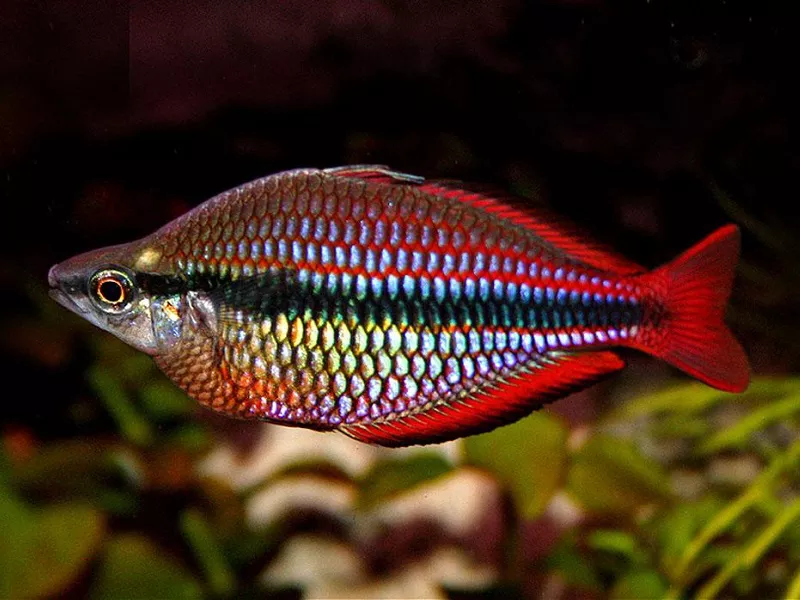Lungfish, with their unique characteristics and ancient origins, have captivated the curiosity of scientists and nature enthusiasts for centuries. One intriguing aspect of lungfish is their habitat preferences. Are they freshwater dwellers or do they venture into the salty depths of the ocean? In this article, we delve into the world of lungfish, exploring their habitat, adaptations, and the remarkable ways they navigate both freshwater and saltwater environments.
-
The Diversity of Lungfish Species:
Lungfish belong to the subclass Dipnoi and are represented by six extant species classified into three genera: Neoceratodus, Lepidosiren, and Protopterus. Each species exhibits unique adaptations that enable them to survive in specific aquatic habitats.
-
Freshwater Lungfish:
The most well-known and widely distributed lungfish species, such as the Australian lungfish (Neoceratodus forsteri), are primarily freshwater inhabitants. They are found in rivers, lakes, and swamps across Australia. These freshwater lungfish have specialized adaptations that allow them to thrive in their specific environment.
Freshwater lungfish possess a pair of lungs, along with gills, which enable them to respire in oxygen-rich environments as well as in stagnant or oxygen-poor water. Their lung-like organ, supplemented by the gills, allows them to extract oxygen from the air during periods of drought or when oxygen levels in the water are low. This unique adaptation grants them the ability to survive in areas with fluctuating water conditions.
-
The African Lungfish: A Remarkable Adaptation to Drying Habitats:
African lungfish (Protopterus) species present a fascinating case of adaptation to extreme environments. These lungfish species inhabit African freshwater systems, particularly those prone to seasonal drying. During the dry season, when their watery homes shrink into isolated pockets, the African lungfish enter a state of estivation, a period of dormancy similar to hibernation.
During estivation, the lungfish burrows into the mud, secretes a mucous cocoon, and enters a metabolic slowdown, surviving on stored energy reserves. As the habitat dries up and becomes inhospitable, the lungfish remains dormant, awaiting the return of the rainy season. When the rains arrive, they emerge from their mud burrows, rehydrate, and resume their active lives.
-
Lungfish and Saltwater:
While most lungfish are primarily freshwater dwellers, there is evidence of some species venturing into brackish or saltwater environments. The South American lungfish (Lepidosiren paradoxa) is a prime example. Found in the Amazon River Basin, these lungfish inhabit swampy regions where the freshwater merges with tidal saltwater.
The South American lungfish possesses specialized salt glands, located in their gill chambers, which enable them to excrete excess salt and maintain osmotic balance in brackish water. While they primarily respire using their gills, they can also gulp air, supplementing their oxygen requirements when oxygen levels in the water are low.
-
Evolutionary Insights:
The ability of lungfish to adapt to various aquatic environments offers valuable insights into their evolutionary history and the transition from aquatic to terrestrial life. These ancient creatures represent a link between fish and terrestrial tetrapods, exhibiting characteristics that shed light on the evolutionary journey of vertebrates.
The survival strategies and habitat adaptations of lungfish provide clues about the challenges faced by early tetrapods as they transitioned from water to land. By studying lungfish, scientists gain valuable insights into the evolution of lungs, the development of limbs, and the adaptations necessary for life on land.
Conclusion:
Lungfish, with their remarkable adaptations and diverse habitat preferences, continue to amaze scientists and nature enthusiasts alike. While the majority of lungfish species are freshwater dwellers, some have evolved to withstand the challenges of brackish or even saltwater environments.
Their unique ability to respire using lungs, gills, or a combination of both, highlights the versatility and adaptability of these fascinating creatures. By studying lungfish, we gain valuable insights into the evolutionary history of vertebrates and the remarkable ways in which life has adapted to various aquatic environments.
Lungfish serve as a reminder of the intricate balance of nature and the incredible diversity of life on our planet. Through ongoing research and exploration, we can continue to unravel the mysteries of lungfish, furthering our understanding of their habitats, adaptations, and their vital place in the story of life’s evolution.
Recommended reading:

























